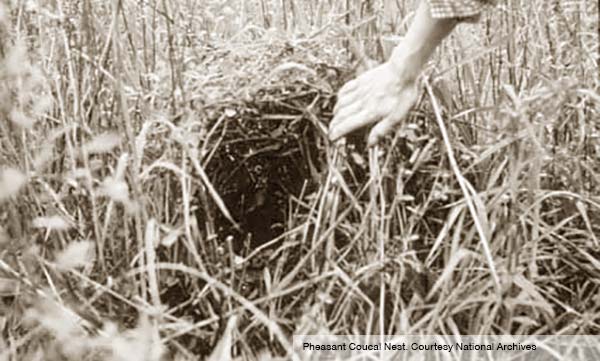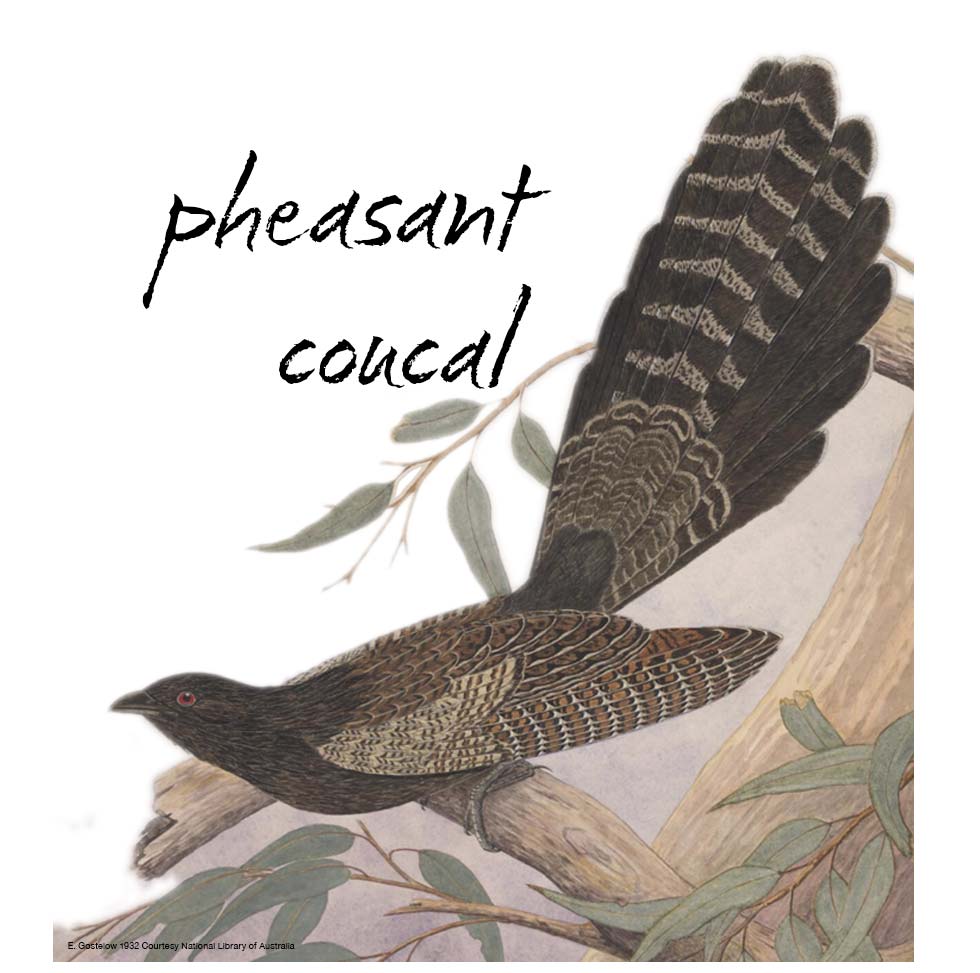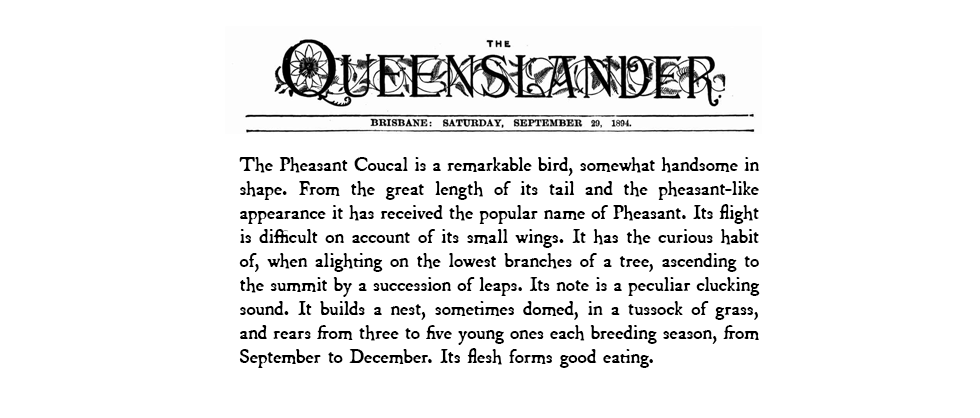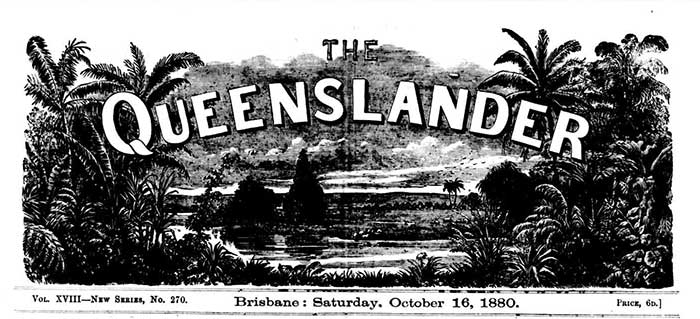
PHEASANT COUCAL - NO SOCIAL BUTTERFLY
One Australian member of the Cuculidae, or cuckoo family, is a firm believer in family and the home influence.
Most bush people lightly dismiss this largish swamp-frequenting species as the ‘swamp pheasant’, but it is correctly the pheasant-coucal, representing a genus of the notorious egg-foisting cuckoos.
The loud ‘coo-coo-coo-coo’ in a descending scale is one of the typical bird voices of coastal Queensland, where the ‘swamp-pheasant’ hunts for grasshoppers, frogs, small lizards, and snakes. When disturbed, it blunders across a road or up a tree to drop like a stone to cover.
Recently Messrs Alec and Jim McKenzie observed coucals flying to a clump of lantana and blady grass on Pimpama Creek. There they watched parent birds stuffing four tiny chicks with grasshoppers.
BIRDS HAD FLOWN !
We called to see this interesting find, only to discover that at proximately 10 days of age the very immature but strong footed youngsters had already left home.
Faint calls of ‘chick’ ‘chick’! eventually betrayed two of the elusive babies which we collected only in a knick of time, for a flickering tongued goanna, hotly attacked and roundly cursed by a parent bird, was even then prosepecting the area.
He joined the collection too!
By extraordinary luck, a true pair, the young coucals are thriving here at West Burleigh. They follow at heel for food and fly upon ones shoulders.
BIG APPETITES
Egg custard, minced meat, tadpoles, beetles, grasshoppers and lizards are devoured ravenously and the birds bid fair to be thoroughly interesting objects of study, for there are quite a few gaps to fill in the pheasant coucal’s life history.






